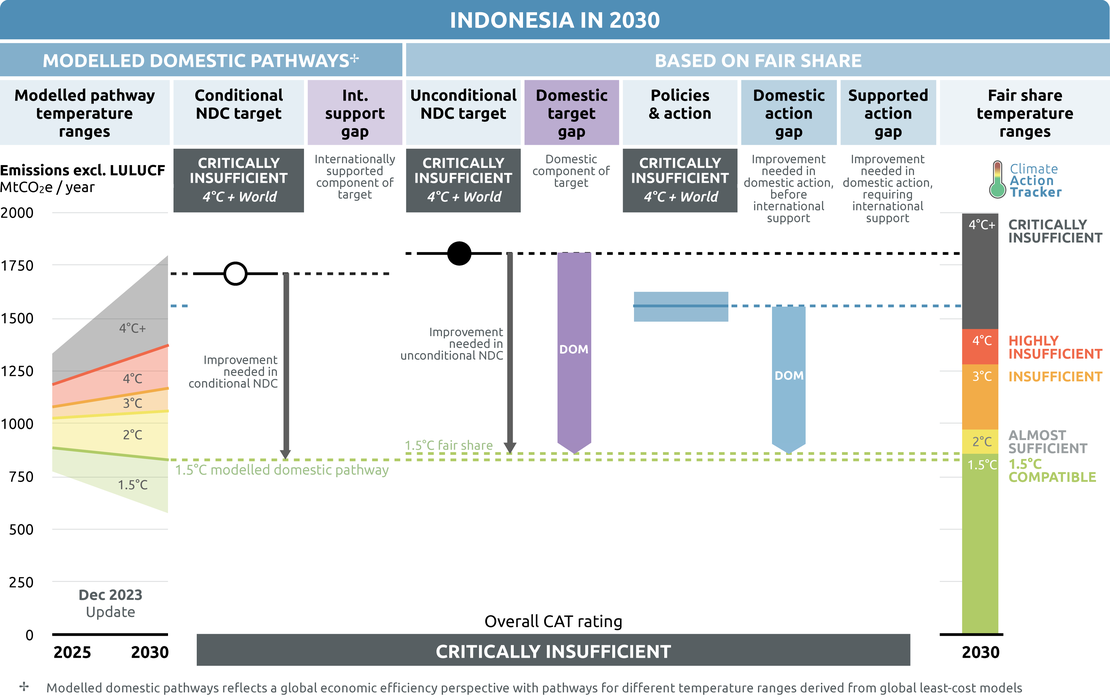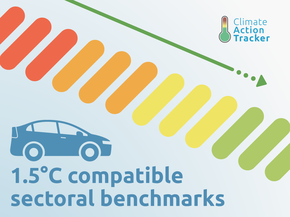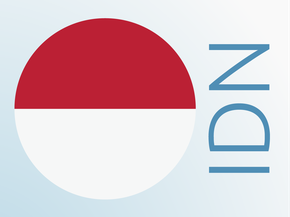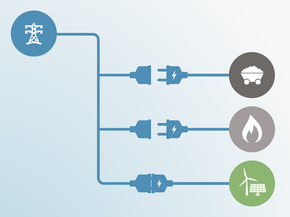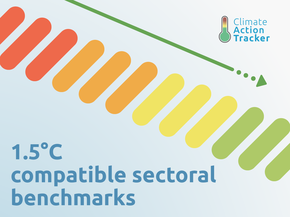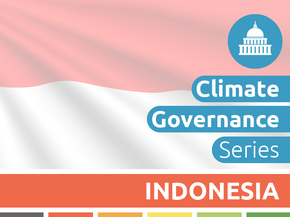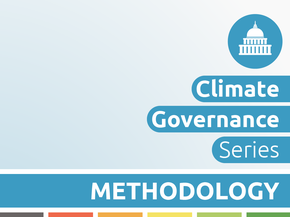Policies & action
The CAT rates Indonesia’s policies and actions against fair share as “Critically Insufficient”, two grades lower compared to the previous assessment. Current policy projections increased by around 300 MtCO2e in 2030, driven by a huge increase in 2022 emissions and quantification of emissions from Indonesia’s off-grid coal power pipeline.
The “Critically insufficient” rating indicates that Indonesia’s policies and action in 2030 currently reflect minimal to no action and are not at all consistent with limiting warming to 1.5°C. If all countries were to follow Indonesia’s approach, warming would exceed 4°C.
Indonesia is expected to implement additional policies with its own resources but will also need international support to implement policies for a full decarbonisation.
Further information on how the CAT rates countries (against modelled domestic pathways and fair share) can be found here.
Policy overview
Indonesia’s emissions increased by over 20% in 2022, driven by a fleet of off-grid coal-fired power plants that came online to fuel smelters for the booming domestic nickel industry, an industry that promises to support Indonesia's clean energy transition. Prior to the JETP process, the government had poor visibility on the exact scale of this coal fleet and pipeline, a problem that surfaced by the JETP Technical Working Group during the formulation of the Comprehensive Investment and Policy Plan (CIPP) and led to a revision of JETP targets.
In November 2023, the JETP secretariat published the CIPP, stating that the targets set out in the Joint Statement were deemed by all parties to be infeasible due to updated information on the scale of the "captive" coal pipeline ("captive" coal plants are off-grid plants built to directly power industrial facilities). New targets are proposed for the on-grid system — peaking emissions at 290 MtCO2 in 2025, limiting to 250 MtCO2 in 2030, and declining thereafter to 175 MtCO2 in 2040 and reaching near net zero in 2050. But total emissions could reach almost 400 MtCO2 in 2030 due to around 150 MtCO2 from the captive coal fleet.
The JETP fails to put Indonesia on a pathway compatible with the Paris Agreements 1.5C temperature goal, for which total power sector emissions fall to around 140-150 MtCO2 in 2030 and reach net zero by 2040 (Climate Action Tracker, 2023; IEA, 2022). Power sector emissions from the JETP on-grid target and uncontrolled off-grid coal could reach 400 MtCO2 in 2030, over double the level needed to limit global warming to 1.5C.
While the JETP can be considered a landmark achievement in international cooperation on climate change, it also highlights persisting shortcomings from wealthy countries with high historic responsibility for climate change to put sufficient levels of finance on the table to support ambitious Paris compatible emissions pathways. The IEA estimates that annual investments in Indonesia’s energy sector would need to reach USD 90bn by 2030 to meet the Paris Agreements 1.5C temperature goal (IEA, 2022).
The pledged USD 21.5bn is just one fifth of what is needed by 2030 for the current JETP pathway that is not aligned with the Paris Agreements temperature goals. The CIPP shows that around USD 96bn is required for the full implementation of the JETP pathway by 2030 and USD 580bn by 2050. The risk of debt due to the high share of concessional and commercial loans, and uncertainty around interest rates, is also a major concern for Indonesia. Of the USD 21.5bn, half is earmarked for public funding, mainly in form of concessional loans, while the other half from private sector market loans at interest rates to be decided later. Just 1.4% of the pledged USD 21.5bn will be in the form of grants.
Indonesia’s climate policies are failing to put the country on a development pathway that uses its vast renewable energy potential. Solar plays the largest role in long-term electricity plans developed by the MEMR (draft national electricity plan RUKN), the JETP secretariat (CIPP), IEA (Net Zero Roadmap), and IESR (Deep Decarbonisation). These plans aim to capitalise on the estimated 2.9–7.7 GW of solar potential that Indonesia has (JETP Secretariat, 2023).
Despite this, these sources contributed less than 1% of electricity generation in 2022. Indonesia urgently needs to address barriers to the development of solar and wind projects if it is to meet its short and long-term targets, including improving pricing regulation, streamlining procurement processes and reforming local content requirements.
Despite the 12% growth in renewable electricity generation in 2022, Indonesia is set to miss its renewables target of 23% by 2025, with renewables reaching just 13.6% of on-grid generation in 2022. Coal generation grew by 8% and accounted for 67% of the on-grid electricity mix in 2022.
Indonesia launched the first ETS in Southeast Asia in February 2023. The first operational phase covers on-grid coal plants larger than 100 MW in 2023, expanding to on-grid coal plants larger than 25 MW in 2024, bringing in off-grid coal plants in 2025, and covering other fossil-based power plants in 2028.
The regulation (MEMR 16/2022) also mandates coal plants to introduce energy efficiency measures, but since the coal price is capped at USD 70 per tonne through the Domestic Market Obligation (DMO) and Independent Power Producer (IPP) contracts pass any increased cost due to policy change onto the state-owned utility PLN, there is no incentive for coal plant owners to implement energy efficiency measures.
A carbon tax was introduced into Indonesia’s tax law at the end of 2021 (President of the Republic of Indonesia, 2021). The carbon tax has faced repeated delays and is now expected in 2025, starting at around 2 USD/tCO2, covering around 86% of the coal plants (IESR, 2023b). The government plans to gradually increase the tax and expand the coverage to other sectors (IESR, 2022b).
The LULUCF sector contributes a large share of emissions, reaching around 1 GtCO2e/yr. Tree cover loss has been on a declining trend since 2016 but commodity-driven deforestation is still a major concern, accounting for over 90% of national tree cover loss in 2022 (Global Forest Watch, 2023).
The Permanent Forest Moratorium only prevents *new* concessions in primary forest and peatlands. It covers 41% of Indonesia’s forests and peatlands and is a key measure to reduce deforestation in Indonesia. The effectiveness of the moratorium is limited due to the exclusion of lands within concessions and secondary forests, and due to poor enforcement (Greenpeace, 2021).
In the transport sector, Indonesia aims to increase biofuel blending mandates, expand mass public transport (MRT) systems, and support the growth of electric vehicles. Indonesia’s biodiesel blending mandate is one of the most ambitious in the world and increased from 30% to 35% in 2023. However, deforestation is a key concern related to bioenergy development in Indonesia due to its reliance on oil palm feedstock.
Sectoral pledges
In Glasgow, four sectoral initiatives were launched to accelerate climate action on methane, the coal exit, 100% EVs and forests. At most, these initiatives may close the 2030 emissions gap by around 9% - or 2.2 GtCO2e, though assessing what is new and what is already covered by existing NDC targets is challenging.
For methane, signatories agreed to cut emissions in all sectors by 30% globally over the next decade. The coal exit initiative seeks to transition away from unabated coal power by the 2030s or 2040s and to cease building new coal plants. Signatories of the 100% EVs declaration agreed that 100% of new car and van sales in 2040 should be electric vehicles, 2035 for leading markets, and on forests, leaders agreed “to halt and reverse forest loss and land degradation by 2030”.
NDCs should be updated to include these sectoral initiatives, if they’re not already covered by existing NDC targets. As with all targets, implementation of the necessary policies and measures is critical to ensuring that these sectoral objectives are actually achieved.
| INDONESIA | Signed? | Included in NDC? | Taking action to achieve? |
|---|---|---|---|
| Methane | Yes | No | Yes |
| Coal exit | Yes | No | Yes |
| Electric vehicles | No | No | Not applicable |
| Forestry | No | No | Not applicable |
| Beyond oil and gas | No | No | Not applicable |
● Methane pledge: Indonesia signed the methane pledge at COP26. Methane emissions are significant in Indonesia, accounting for 25% of Indonesia’s emissions in 2019. Methane emissions are split between the waste sector (56%), agriculture sector (30%), and the energy sector (14%). Methane emissions are covered in Indonesia’s NDC.
● Coal exit: Indonesia signed up to part of the Coal Exit at COP26: Clause 2 (phase out 2030/2040), but not Clause 3 (no new plants). In 2022, Indonesia set a 2050 phase out date for unabated coal-fired power generation (Presidential Regulation 112). The Asian Development Bank’s Energy Transition Mechanism (ETM) and the Just Energy Transition Partnership (JETP) deal both failed to put Indonesia on a Paris compatible path to phase out coal-fired power generation by 2040.
Coal-fired power plants accounted for 67% of the electricity mix in 2022 (MEMR, 2023b). By the end of 2022 Indonesia had 40.6 GW of operating coal-fired power plants and a further 18.8 GW under construction (Global Energy Monitor, 2023).
● 100% EVs: Indonesia did not sign the declaration on accelerating the transition to 100% zero emission cars and vans at COP26. The uptake of EVs in Indonesia is slow and falls far short of the government’s targets.
● Forestry: Indonesia signed the forestry pledge at COP26 but later withdrew, stating that the pledge was at odds with Indonesia’s development goals.
● Beyond oil and gas: Indonesia did not sign the beyond oil and gas pledge at COP26.
Just Energy Transition Partnership
In November 2022, the Government of Indonesia signed a Joint Statement agreeing terms of a Just Energy Transition Partnership (JETP) with the Governments of Japan, USA, Canada, Denmark, EU, Germany, Norway, Italy, and the UK. The statement includes headline targets to boost renewables to 34% of the power mix by 2030, accelerate early retirement of coal plants, and peak power sector emissions at a cap of 290 MtCO2 in 2030, thereafter reducing to net zero by 2050.
One year after signing of the Joint Statement, the JETP secretariat published the Comprehensive Investment and Policy Plan (CIPP) (JETP Secretariat, 2023). The plan states that due to new insights on the huge pipeline of "captive" (off-grid - connected to industrial facilities) coal plants, the targets set in the Joint Statement were deemed by all parties to be infeasible.
The JETP Secretariat proposes new targets, focusing only on the on-grid system: (1) peaking on-grid power emissions before 2030 and capping on-grid power emissions at 250 MtCO2 in 2030, (2) increasing the share of on-grid renewable power to 44% in 2030, and (3) reaching near zero in the on-grid power system by 2050.
The JETP Technical Working Group will study the off-grid coal sector and formulate an ambitious decarbonisation plan. Baseline emissions for off-grid coal plants could reach around 150 MtCO2 in 2030, meaning that total power sector emissions could reach 400 MtCO2 in 2030 – 38% above the initial JETP Joint Statement target that was deemed compatible with around 2C warming.
The main JETP pathway includes no early retirement of (on-grid) coal plants before 2030. The pathway envisages 1.7 GW early retirement between 2035 and 2040, and an accelerated retiring and repurposing (retrofit to run on bioenergy or ammonia) of around 10 GW coal plants nearing their natural retirement age between 2045-2050.
Despite the seemingly unambitious early retirement plan, the JETP aims to reduce emissions by around 65 MtCO2 compared to the 2023 draft RUKN and limit on-grid emissions to 250 Mt in 2030. Key to achieving this is operating coal plants at lower capacity factors than currently allowed in PLN’s power purchase agreements — reducing capacity factors from over 70% in 2023, to 63% in 2030 and around 50% in 2040. The CIPP describes several key measures for achieving this:
- Allow coal plants to operate more flexibly through (1) incentivises provision of flexibility and ancillary services, and (2) reform minimum dispatch requirements.
- Support the upscaling of renewable power through (1) priority dispatch of renewable power, (2) minimum renewables share for power producers (renewable portfolio standards), (3) carbon pricing, (4) reform local content requirements, (5) align renewables power purchase agreements procurement with market standards, and (6) increase the coal price above the domestic market obligation (DMO) of USD 70 per tonne.
The JETP Secretariat show that this pathway with partial coal phase out and an emissions cap is more cost-effective than two alternative scenarios: (Case 1) partial coal phase out + no climate policy emissions limit and (Case 2) full coal phase out + no climate policy emissions limit (Table 5.2-7). Compared to a full phase out, the partial phase out avoids USD 4.7bn cost for retiring an additional 5.2 GW coal plants, while limiting emissions to 250 MtCO2 through reducing the capacity factor of existing coal plants. In theory this avoided cost can be distributed amongst the other key investment areas identified in the CIPP. A risk of this approach, compared to that of the full phase out, is that there is no hard measure to limit the amount of power (and emissions) generated from coal plants that remain active.
While the JETP can be considered a landmark achievement in international cooperation on climate change, several key concerns have emerged:
- Targets not aligned with Paris Agreement: the targets outlined in the CIPP are not aligned with the 1.5°C temperature limit, for which coal-fired power in Indonesia would need to be phased out by 2040 and total power sector emissions would need to be capped at around 150 Mt (Climate Action Tracker, 2023; IEA, 2022; IPCC, 2022).
- Insufficient funds: the JETP highlights persisting shortcomings from wealthy countries to put sufficient levels of finance on the table to support ambitious Paris compatible emissions pathways. The CIPP shows that around USD 96bn is required for the implementation of the JETP pathway by 2030 and USD 580bn by 2050.
- The high share of loans poses debt risk. Of the pledged USD 21.5bn, half is earmarked for public funding, mainly concessional loans, while the other half private sector market loans at interest rates to be decided later. Just 1.4% of the pledged USD 21.5bn will be in the form of grants. The form of JETP financing is another cause for concern – In an equitable world, climate finance flows from wealthy countries with high responsibility for climate change, to developing and emerging economies. Such financial support should be transparently communicated in grant equivalents (Ecologic Institute, 2023).
- Missing the “justice” in “just energy transition partnership”: the CIPP lacks a real plan and associated policies and finance to support workers and communities most affected by the transition away from reliance on coal. The CIPP should set out a clear set of measures, with associated finance to ensure that coal sector workers are not ignored and lose out from the transition. Failing to address these important concerns would undermine credibility that the process sufficiently prioritises considerations of equity and justice.
- Lack of time and information for meaningful public engagement: the international community had just 14 days to comment of the draft CIPP, while the Indonesian version was available just 3 working days before the deadline for comments. There was also no effort made to help the public understand the substantive proposals and engage in a meaningful way.
The JETP is one of five energy transition schemes that Indonesia is exploring, the others are led by the Asian Development Bank (ETM), PT SMI (under Ministry of Finance), the national electricity utility PLN, and Indonesia Investment Authority (INA) (IEEFA, 2022).
Energy supply
Recent developments in Indonesia highlight the conflict between increasing support for, and deployment of, renewables, and the continued expansion of fossil fuel capacity, mainly coal, locking in Indonesia’s long-term fossil fuel dependency.
The long-awaited New and Renewable Energy Law has been submitted to Parliament and is expected early 2024. The latest draft from May 2022 describes a list of measures to support the development of new and renewable energy, including revising the pricing system for renewables (which is currently limited to 85% of the average generation cost), establishing a renewable energy fund, building renewable energy infrastructure, and providing incentives to developers. A key source of controversy is the definition of “new energy”, which includes nuclear and coal-derived products with high carbon emissions such as liquefied coal and gasified coal.
Two overarching laws, the 30/2007 Energy Law and the 30/2009 Electricity Law, provide guiding principles for Indonesia’s energy sector. These are supported by implementing regulations from the central government, the President, ministries, and local governments. Regulation 79/2014 on National Energy Policy describes Indonesia’s energy and electricity fuel share targets, including minimum share for new and renewable energy (23%), coal (30%) and gas (22%) in 2025.
The national energy general plan (RUEN) and national electricity general plan (RUKN) formulate a pathway for the sector to achieve the targets set out in the National Energy Policy. In 2023, Indonesia published an updated draft of the RUKN (2023-2060) which envisages several scenarios for the electricity sector aligned with meeting the national goals of becoming a developed country by 2045 and reaching net zero GHG emissions by 2060 or sooner. An annual electricity supply business plan from PLN (RUPTL) is formulated to achieve the goals of the RUKN. PLN is currently finalising an updated RUPTL 2024-2040, expected early 2024. We consider the 2021-2030 RUPTL in our current policy projections.
Coal
Coal phase-out remains one of the most important avenues for Indonesia’s decarbonisation. Coal-fired power plants accounted for 67% of the electricity mix in 2022 (MEMR, 2023b). By the end of 2022 Indonesia had 40.6 GW operating coal-fired power plants and a further 18.8 GW under construction (Global Energy Monitor, 2023). This pipeline is part of the government’s 2015–2019 35 GW Plan initiated to increase the electrification ratio while meeting the forecast growth in energy demand. The current electricity sector plan (RUPTL 2021–2030) includes coal accounting for 64% of the power mix by 2030. Current plans are not aligned with the 1.5°C temperature limit, for which coal power in Indonesia would need to be capped at 10% of generation in 2030 and phased out by 2040 (Figure 1).
Indonesia set a 2050 phase-out date for unabated coal power generation in Presidential Regulation 112/2022 (Government of Indonesia, 2022). The regulation also introduces a moratorium on new coal-fired power plants (some exceptions and related conditions) and mandates the formulation of a coal phase-out plan. New coal plants (not planned in RUPTL 2021-2030) are only allowed for industrial users with the purpose of generating value from natural resources, and with the condition that emissions need to be reduced by 35% after 10 years and retired latest by 2050.
The JETP aims to retire 1.7 GW coal plants 2035-2040 and accelerate retiring and repurposing (retrofit to run on bioenergy or ammonia) of around 10 GW of coal plants nearing their natural retirement age between 2045 and 2050. To meet the JETP 250 MtCO2 cap for on-grid emissions, coal plants are allowed to operate more flexibly than in the current system — reducing capacity factors of over 70% in 2023, to 63% in 2030 and around 50% in 2040. See JETP section for more information.
Off-grid coal power generation is a major concern for Indonesia’s energy transition and climate goals. The huge fleet of newly operating and planned off-grid coal plants skyrocketed Indonesia’s emissions by 21% in 2022 and forced a revision of the JETP Joint Statement targets.
These off-grid coal plants fuel the booming domestic metals industry and large infrastructure projects for the new capital. Off-grid coal could reach 30 GW in 2030 and result in an additional 150 MtCO2, meaning total power sector emissions under the JETP scenario could reach 400 MtCO2 in 2030 – more than twice the level needed to align with the Paris Agreement’s 1.5C temperature limit (150 MtCO2) (Climate Action Tracker, 2023; IEA, 2022). A phase-out of coal-fired power generation before 2045 would bring significant environmental, social, and economic benefits — the avoided costs from health care and coal subsidies outweigh the cost of stranded assets, decommissioning, employment transition, and revenue loss by 2–4 times (IESR, 2022a). By phasing out coal-fired power plants over 20 years old and re-evaluating its coal pipeline, Indonesia could avoid over 45,000 premature deaths in the next decade (Climate Action Tracker, 2021).
In contrast to the discussions around phasing out coal-fired power, Indonesia is moving forward with plans to expand its downstream coal industry with the aim of producing coal-based chemicals to replace oil and gas fuels and feedstocks.
This is supported by the inclusion of coal-derived fuels in the 2022 draft New and Renewable Energy Law (expected 2024). The revised Coal and Mineral Law 2020 and supporting regulations set the legal basis for this, while the MEMR outlines the development plan in its Grand Strategy for Coal and Development and Utilisation of Coal Road Map (MEMR, 2022c, 2022d). Indonesia plans to produce 4.6 Mt Dimethyl ether (DME) and 7.9 Mt of coal-based methanol by 2025, increasing to 6.1 Mt and 14.1 Mt by 2045, respectively.
Coal is also Indonesia’s biggest export product and, with major export markets beginning to reduce their consumption and price embedded carbon in traded goods, there is a clear need for Indonesia to both diversify its economy away from fossil fuel exports and to invest in reducing the carbon intensity of its exports. International efforts to price embedded carbon, such as the EU’s Carbon Border Adjustment Mechanism (CBAM), will significantly reduce the competitiveness of carbon-intense goods, like coal-derived fuels.
Renewables
Two major renewables projects came online in 2023 – the largest floating solar PV plant in Southeast Asia and Indonesia’s first green hydrogen refinery. The 195 MWp floating solar PV plant is located on the Cirata hydropower reservoir in West Java (IESR, 2023a). In November 2023, its developers, PLN and Masdar, signed a Memorandum of Understanding to add 500 MW of capacity in phase II of the project. The green hydrogen project is located at the Muara Karang Steam Gas Power Plant in Jakarta and utilises a mix of on-site solar PV and renewable energy certificates (MEMR, 2023d).
The overarching targets for the energy sector are set by the National Energy Policy (NEP). Indonesia aims to increase the share of renewables in primary energy to 23% by 2025 and 31% by 2050. The NEP also targets 23% renewables in electricity generation by 2025 and 31% by 2050.
However, renewables uptake has been inconsistent with this target – renewables accounted for only 11.5% of Indonesia’s primary energy mix and 13.6% of its electricity mix in 2022 (MEMR, 2023b). Variable renewables (solar and wind) accounted for less than 1% of Indonesia’s power generation in 2022 (MEMR, 2023b). The CAT estimates that to meet the Paris Agreement’s 1.5C temperature goal, the share of renewables in Indonesia’s power sector needs to rapidly scale up to 55-82% by 2030 (Climate Action Tracker, 2023).
The initial targets in Indonesia’s JETP Joint Statement targeted 34% renewable electricity generation by 2030. The November 2023 comprehensive investment and policy plan (CIPP) contains revised targets, focusing on the on-grid system, where renewables should reach 44% of generation in 2030 – a significant increase in ambition compared to current levels of 13.6% in 2022 and Indonesia’s previous target of 23% by 2025.
Co-firing and repurposing coal-fired power plants to run on biomass and ammonia is a key strategy for Indonesia’s energy transition. The JETP CIPP plans to accelerate the retiring and repurposing (retrofit to run on bioenergy or ammonia) of around 10 GW of coal plants nearing their natural retirement age between 2045-2050. PLN’s biomass co-firing programme aims to increase the share of renewables by 3.6% and support the achievement of the national renewables target of 23% by 2025 (PLN, 2023). The plan targets 10.2 million tonnes of biomass with 12.71 TWh by 2025, however, feedstock availability, sustainable sourcing, and price remain major hurdles to implement the target.
The utilisation of renewable energy potential in Indonesia remains low. The MEMR estimates Indonesia has 3286 GW of solar potential, 94 GW of hydropower, 155 GW of wind power (on and offshore), 57 GW of bioenergy, 24 GW of geothermal, and 20 GW of wave power (MEMR, 2023a).
In a shift in visioning, Indonesia has finally started to propose utilising more of its vast solar energy potential in its forthcoming plans (RUKN and JETP CIPP). These plans aim to increase current installed capacity from just 0.1 GW to around 30 GW in 2030 and over 250 GW in 2050 (JETP Secretariat, 2023; MEMR, 2023a). Indonesia urgently needs to address barriers to the development of solar and wind projects if it is to meet its short and long-term targets.
The New and Renewable Energy Law has faced repeated delays and is now expected for early 2024. The law aims to provide a legal framework for supporting the development of new and renewable energy through fiscal incentives, land, infrastructure, and government guarantees (Reuters, 2022). The draft bill lists solar, wind, hydro, and geothermal as renewables, and considers nuclear, hydrogen, coal bed methane, coal liquefaction, and coal gasification as sources of “new energy”.
Local content requirements (LCR) restrict the expansion of solar PV in Indonesia, particularly utility-scale projects. A key measure outlined in the 2023 JETP CIPP is the removal of LCR for renewables. Regulation 4/2017 sets the minimum LCR at 40% in 2017 and increased it to 60% in 2019 but now relaxed to 40% until 2024. However, Indonesia’s solar PV manufacturing industry is still in its infancy, and is currently only able to achieve a maximum of 47.5% local content. High LCRs impose higher costs and lower returns for PV projects due to lower efficiencies. The government is now considering revising the Regulation 4/2017 to reflect current technology and solar PV industry developments. Further regulatory development is important if Indonesia is to realise its plans to increase utility-scale solar PV in its domestic electricity supply and exports.
Industry
In 2022, industry accounted for 42% of national energy demand (MEMR, 2023b). The sector saw a huge increase in energy demand, fuelled by the growth of the domestic iron, steel and metallurgy sector, which accounted for almost 60% of coal demand in 2022 (MEMR, 2023b). A large share of the demand is from smelters for the rapidly expanding nickel industry that aims to support the development of Indonesia’s battery supply chain. Indonesia is the world's largest producer of nickel, and as such, will play a key role in the global energy transition. The domestic market obligation for coal (DMO) sets the price at USD 70 per tonne, ensuring coal remains the cheapest energy source (IISD, 2019).
Indonesia’s vision of industrial development is outlined in the Master Plan for National Industry Development (RIPIN) 2015-2035 and targets 10.5% annual growth (Ministry of Industry, 2015). Current emission reduction measures focus on blended cement to reduce clinker consumption and improving technology in ammonia plants (Government of Indonesia, 2021).
In August 2023 the government issued a revision of the Energy Conservation Regulation 70/2009 (33/2023), which mandates energy consumers above certain consumption levels to conduct energy conservation activities. In industry, energy consumers over 4 ktoe/year are mandated to save energy through ‘energy management’, which includes implementing energy-efficient technology and conducting regular energy audits.
Emissions from on-grid coal plants and industrial captive (off-grid) coal plants engulf Jakarta and made it the most polluted city in the world in 2023 (Jong, 2023). In response to intensifying concerns over air quality, the Ministry of Industry has been recently tasked with investigating and controlling industrial emissions (Ministry of Industry, 2023). Measures include periodic checks of company reports in the National Industrial Information System (SIINas) and conducting audits to ensure compliance with national regulations.
Transport
The expansion of zero emission fuels in the transport sector is essential for meeting the 1.5°C temperature limit. While Indonesia has strategies in place to support both the use of biofuels and electric vehicles, current outcomes fall short of national targets. In 2023 the Ministry of Transport published the long-awaited update of 201/2013 (8/2023) on the Determination of National Action Plan for Reducing GHG Emissions in the Transport Sector (Ministry of Transport, 2023). The plan outlines 34 key actions categorised by energy efficiency, utilisation of new and renewable energy, and forestry measures.
Biofuels
Biofuels play a key role in achieving Indonesia’s renewable energy targets – Presidential Regulation 22/2017 states that biofuel consumption should reach 13.9 billion litres by 2030 and 52.3 billion litres by 2050 (Republic of Indonesia, 2017). The national biodiesel mandate is the main instrument used to achieve these targets.
Indonesia’s biodiesel mandate programme is one of the most ambitious in the world. The blending level has increased from 15% in 2015, to 20% in 2016, 30% in 2020, and in February 2023 it was raised to 35% (EKON, 2023). The government plans to further increase this to 40% with successful tests for light-duty vehicles late 2022, while tests for heavy-duty vehicles commenced in May 2023. Indonesia subsidises the price difference between biodiesel and fossil diesel, using funds from palm oil export levies.
In June 2023, Indonesia restarted its bioethanol programme after a long-dormant period (MEMR, 2023c). Presidential Regulation 40/2023 sets targets to achieve self-sufficient sugar production by 2028 and produce 1.2 billion litres of sugarcane ethanol by 2030. In July 2023, Indonesia launched sales of E5 – gasoline containing 5% bioethanol.
Deforestation is a key issue surrounding biofuel development in Indonesia since palm plantations are a main driver for tree-cover loss (see Forestry section). Full implementation of the B30-B50 program is estimated to require 20.5-22.8 million hectares by 2024, meaning another 4-6 million hectares of land will need to be cleared for palm oil plantations (IESR, 2021).
To address concerns from the international community over palm oil-driven deforestation, Presidential Regulation 44/2020 mandated all oil palm plantations to be certified under the Indonesia Sustainable Palm Oil (ISPO) scheme. After several years of implementation, significant concerns remain around (1) coverage – by August 2022 ISPO certificates cover just 35% of mature palm oil plantations, (2) poor design – certification of controversial plantations previously deemed illegal, and (3) poor transparency – lack of publicly available data (EIA, 2022; Indonesia Information Portal, 2022).
Strengthening environmental policies for biofuel development will be key for Indonesia’s export market. In June 2023, the European Union, the second largest importer of Indonesian palm oil, introduced the Regulation on deforestation-free products (EUDR), which imposes restrictions to ensure that consumption in EU does not drive deforestation (European Commission, 2023). The EU, Indonesia, and Malaysia have agreed on a Joint Task Force to implement the EUDR, assessing key issues for relevant commodities Indonesia and Malaysia (European Directorate-General for Environment, 2023).
Electric vehicles
Indonesia is shifting its attention towards electric vehicles (EVs) to address major air pollution concerns. To achieve its NDC target, Indonesia estimates that electric two-wheelers (E2W) need to reach 1.8 million by 2025 and 13 million by 2030, while electric four-wheelers (E4W) need to reach 400,000 by 2025 and 2 million by 2030 (Republic of Indonesia, 2022). The uptake of EVs has increased dramatically in the last few years but still falls far short of national targets - by September 2023, Indonesia had around 18,300 E2W and 62,800 E4W (BeritaSatu, 2023).
The government has issued several regulations to boost the domestic electric vehicle (EV) industry and to support reaching these targets, but several barriers remain. The high local content requirement (LCR) for domestically manufactured EVs is considered a barrier to the growth of the industry. Regulation 27/2020 sets a minimum LCR of 35% for two-wheelers and 40% for four-wheelers in 2021. Government plans to increase this to 60% by 2024 have implications for the growth of the industry – a 60% LCR would mean that batteries and electric drivetrains need to be 100% local. As domestic battery production is yet to begin, this high LCR could constrain the expansion of Indonesia’s domestic EV industry (IESR 2022).
Several regulations were introduced in 2020 to support Regulation 55/2019, providing fiscal incentives to lower the cost of EV ownership and infrastructure development (Regulation 73/2019, replaced by Regulation 74/2021), however, these are still insufficient to make EV purchase prices comparable with conventional vehicles in Indonesia (IESR, 2021b, 2022b).
Charging infrastructure has been expanding quickly but progress falls short of targets and it remains a key barrier to further adoption of EVs in Indonesia (IESR, 2022b). By September 2023, Indonesia had around 850 fast charging and 1700 battery exchange units, representing a 50-76% increase compared to 2022 (Dananjaya & Ferdian, 2023).
Transport infrastructure & public transit
Mitigation actions on transport infrastructure and planning in Indonesia are guided by the newly published Transportation Decree 8/2023 (Ministry of Transport, 2023). Development of road-based public transport and utilisation of rail-based mass transport are two of the key measures identified in the decree. The decree only provides an overarching plan and needs to be supported through regulations that drive progress in each of the action areas identified.
Jakarta, the Indonesian capital, has approximately one million commuters every day. The city’s Transport Master Plan states that public transport should reach 60% of the passenger ridership by 2029 (Republic of Indonesia, 2018d). In March 2019 the first line of Jakarta’s Mass Rapid Transit system opened and a second line is expected to be completed by 2024. In May 2022 Alstom and PT MRT Jakarta signed an MoU to explore the further development of Jakarta’s MRT system (Alstom, 2022). A key challenge now is securing the modal shift in commuter habits. The transit system is currently only used by 20% of commuters.
TransJakarta is leading the way in electrification of bus rapid transit (BRT) with 52 electric buses by 2023 (Ditjen Hubdat, 2022; Faqih Rohman & Kairini, 2023; Semarang Department of Transportation, 2022). TransJakarta has ambitious plans to electrify 100% of its fleet by 2030, an estimated 10,000 buses (ITDP, 2023). Financing is a key barrier to accelerating the electrification of BRT systems since they are funded by local governments – of the 17 BRT systems, four currently have electric buses (Faqih Rohman & Kairini, 2023).
Forestry
Indonesia’s emissions from land-use, land-use change and forestry (LULUCF) have accounted for almost half of the country’s total emissions over the last 20 years, reaching around 1 GtCO2e/yr (Republic of Indonesia, 2021a). Reducing emissions from deforestation is a vital part of Indonesia’s climate action – the forestry sector accounts for around 60% of the emissions reduction effort in Indonesia’s conditional and unconditional NDC targets. To meet its NDC and LTS targets, Indonesia envisages the forestry sector becoming a net sink by 2030. Stronger policies are needed to drive reductions in the sector, with current policy projections for 2030 ranging from 862-894 MtCO2e/yr in 2030 (Figure 5) (Nascimento et al., 2023).
Indonesia alone contributed to 6.4% of the total global tree cover loss between 2001 and 2022 (Global Forest Watch, 2023). Annual tree cover loss peaked in 2016 at 2400 kha, however, annual tree cover loss decreased each year between 2016 and 2021. It is contested whether this was due to improved enforcement of forestry regulation or was rather due to increased rainfall that reduced emissions from slash and burn land clearing and a drop in palm oil price (Union of Concerned Scientists, Greenpeace, World Resources Institute, 2019). Tree cover loss increased for the first time since 2016 in 2022 following the expiration of the 2019-2021 moratorium on new palm oil plantations, reaching 885 kHa (Global Forest Watch, 2023).
The biggest driver for deforestation is commodity-driven deforestation, which accounted for over 94% in 2022 (Global Forest Watch, 2023). Fires are used as a cheap and easy way to clear land for commodity plantations like palm oil and are a major source of LULUCF emissions in Indonesia. The expansion of commodity industries like palm oil is driven by global demand and fostered by national development and energy policies (Dwisatrio et al., 2021). Deforestation for palm oil plantations is a particularly pressing concern surrounding biofuel development in Indonesia, especially with discussions around increasing the biodiesel blending mandate beyond 35% – see Biofuels section.
The international community can play a key role in protecting Indonesia’s forests by providing results-based financing for activities that Reduce Emissions from Deforestation and Forest Degradation (REDD+). Norway and the US support Indonesia’s REDD+ activities through bi-lateral agreements. In October 2022 Indonesia received USD 56m from Norway for verified emissions reductions in the year 2016/2017 (Norway’s International Climate and Forestry Initiative, 2022). In 2023 USAID pledged USD 50m over the next five years to support Indonesia with its REDD+ activities (USAID, 2023). In addition, Indonesia is set to receive USD 103.8m from the UN’s Green Climate Fund (GCF) for verified emissions reductions in the forestry sector between 2014 and 2016 (UNDP, 2023).
The permanent moratorium on primary forest and peatland has been one of the main policies to limit deforestation since its introduction in 2011. The moratorium was renewed every two years and became permanent in 2019 through Presidential Instruction 5/2019. The moratorium covers 41% of Indonesia’s forests and peatlands – the remaining 59% is excluded as secondary forest (47%) and land within concession (12%) (Union of Concerned Scientists, Greenpeace, World Resources Institute, 2019).
Emission reductions from the moratorium on *new* concessions on forest and peatlands only amount to 3-4% of the 29% reductions targeted in Indonesia’s 2021 NDC (Groom et al., 2022). The efficacy of the moratorium is contested: while the policy is considered a good instrument to limit future deforestation in Indonesia (Mosnier et al., 2017) some research shows that deforestation has increased since it was implemented (Greenpeace Southeast Asia, 2019).
The strict enforcement of this moratorium is essential for mitigating the environmental and social risks of biofuel and commodity production in Indonesia. Upgrading the Presidential Instruction to a law or Presidential Regulation would provide legally binding means of enforcement.
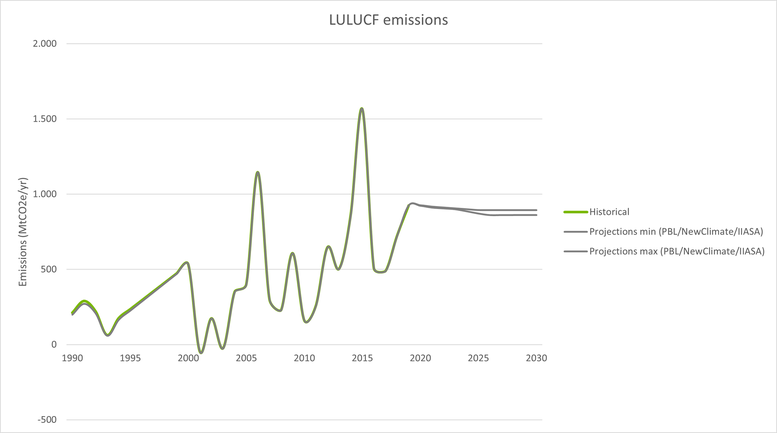
Indonesia’s LTS envisages this sector becoming a net sink by 2050 under the current policies scenario, and by 2030 under the ambitious low carbon scenario compatible with the Paris Agreement (LCCP). In February 2022, the Ministry of Environment and Forestry published an operational plan for achieving net negative emissions in the forestry and other land use (FOLU) sector by 2030 (Ministry of Environment and Forestry, 2022). In this sector Indonesia aims to reach -140 MtCO2e net GHG emissions by 2030. The plan emphasises several key mitigation actions, including prevention of deforestation, conservation of natural forests, sustainable forest management (SFM), and enhancing carbon sinks from peatlands and mangroves.
Indonesia has signed several international agreements on forest governance and the protection of biodiversity (UNFF, FLEGT, Amsterdam Declarations, Bonn Challenge and the New York Declaration on Forests, CBD, CITES) and made changes to the institutional arrangements and regulations relating to the reduction of emissions from deforestation and forest degradation (Dwisatrio et al., 2021).
Agriculture
The overall emissions intensity of the agriculture sector has been on a declining trend in Indonesia for the past 20 years. Nonetheless, the demand for biofuels has impacts on the agricultural and land use sector, as this demand may be met by expanding domestic palm oil and sugar cane industries.
Rice cultivation, livestock, and fertilisers are the three main mitigation areas for the agriculture sector outlined in Indonesia’s LTS (Government of Indonesia, 2021). Low emissions variety rice and water-saving paddy cultivation are the main measures for rice cultivation. Utilisation of livestock waste for biogas and improvement of livestock feed are the main measures for livestock. Finally, the use of organic fertiliser should be expanded to reduce the demand for synthetic fertiliser.
In 2018, Indonesia implemented a policy that mandates all state crops to maintain sustainable practices including banning the use of fire for land clearing (Republic of Indonesia, 2018b). The government allocates its highest agriculture mitigation target to developing palm plantation areas on non-forested land/abandoned land/ degraded land/other use areas, but the exact approach to achieving this is neither well-explained nor easily traceable (Republic of Indonesia, 2018c).
Buildings
The growing middle-class energy demand means a continued relevance of the building sector in Indonesia. To mitigate the impacts of growing demand, the Indonesian government has set targets to reduce total final energy consumption in the buildings sector (both commercial and housing) by 15% compared to a BAU by 2025 (ASEAN Centre for Energy and GIZ, 2018).
In January 2022, the Ministry of Energy and Mineral Resources published a roadmap for energy efficiency, low-carbon buildings, and construction sector in Indonesia (MEMR, 2022). The roadmap identifies priority short-term, medium-term, and long-term actions across several areas including urban planning, new buildings, and renewable energy.
In August 2023 the government issued a revision of the Energy Conservation Regulation 70/2009 (33/2023), which sets energy standards for buildings concerning building envelop, air conditioning, lighting appliances, and energy audit procedure. Energy efficiency activities are now obligated for energy consumers above a specified size in four sectors: energy supply, transportation, industry, and buildings.
Minimum Energy Performance standards (MEPS) and labelling for electrical appliances are regulated through MEMR Regulation 14/2021. The regulation covers air conditioners, fans, refrigerators, and rice cookers and aligns MEPS and labelling with international best practice (IESR, 2022).
Indonesia is making progress on green building through regulation and certification efforts. The government launched Regulation 21/2021 to addresses the performance assessment of all construction projects subject to green building requirements, which include new and existing buildings and green areas. Projects that fall under these requirements can obtain a certification through the Green Building Council of Indonesia.
Further analysis
Country-related publications
Stay informed
Subscribe to our newsletter
